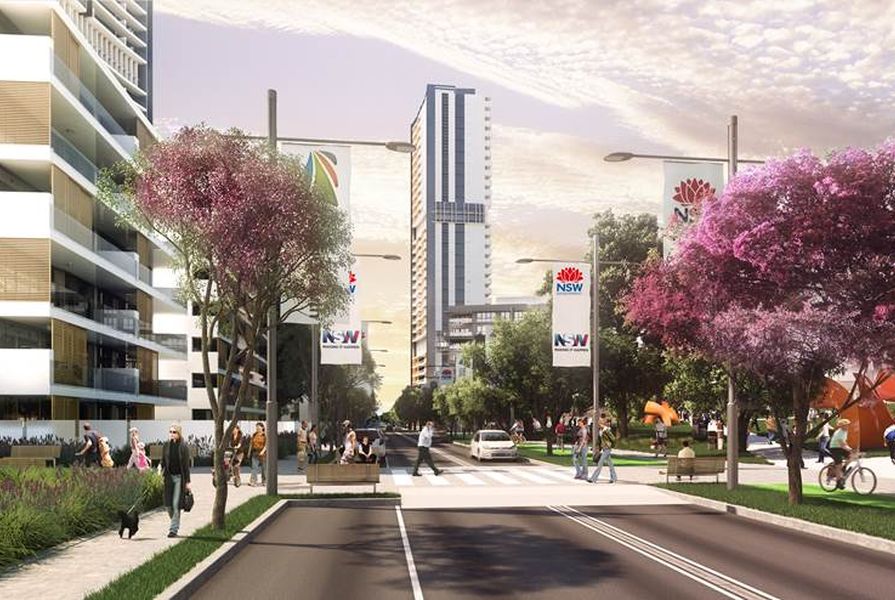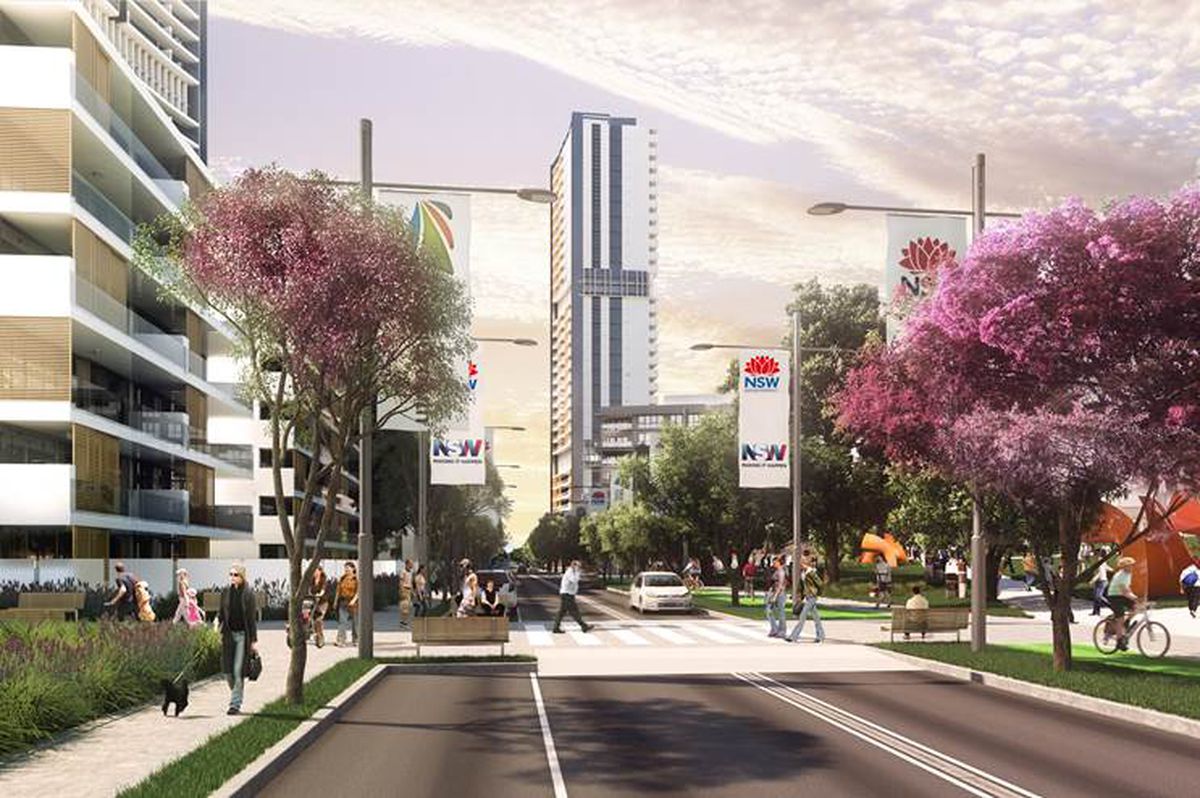That neighbourhoods should have a diversity of tenure and a mix of incomes is increasingly and enthusiastically advocated by planners and urban designers. The renewal of housing estates to achieve this ‘social mix’ has come to be seen by governments, planners and state development corporations as a remedy for underfunded public housing estates. This is despite academic literature heavily disputing the actual benefits of such initiatives.1
This enthusiasm for demolishing and redeveloping neighbourhoods is strongly in evidence in Sydney, where the doctrine of mixed communities and diverse housing is leading the ‘renewal’ of communities and neighbourhoods across inner-city Sydney.
This article offers a rebuttal to the takenforgranted view of estate renewal as an
unquestionable good. Planning practice has failed to question the impacts of estate renewal, and here I argue for an alternative view of it — one that wonders whether estate renewal is the panacea it is so often claimed to be.
The most recent inner-Sydney neighbourhood to be the recipient of a renewal proposal is Waterloo. Currently home to one of Sydney’s largest innercity public housing estates, Waterloo is to be redeveloped as a ‘sustainable and liveable’ community; displacing over 4,000 residents. The doctrine of ‘social mix’ is in full evidence here, with government policy aiming for no more than 30% of the tenure mix to be social housing. 30% is commonly reiterated by planners as a maximum threshold of low-income households for an area to be ‘sustainable’ and ‘liveable’,2 despite a lack of evidence in literature for 30% being a key threshold.3
Waterloo has considerable diversity already. While majority of areas across Australia are dominated by owneroccupied detached houses, Waterloo has a very high proportion of apartments. Waterloo households have greater tenure diversity than elsewhere in NSW, with a large proportion of the population renting from either community housing providers or privately. The area is also home to an ethnically diverse population, with an indigenous community that has a longstanding connection to the area and a majority of residents either born overseas or having both parents born overseas.
I am convinced that the redevelopment of Waterloo is driven by several motivators—none of which involve a sincere concern with improving the lives of the existing community. First, it is driven by the neoliberal desire to valorise and commoditise all urban areas for development, including those owned by the State. This is in effect across Sydney, as government privatises the ownership and/or management of increasing proportions of public assets in our city, including infrastructure and public spaces. The privatisation of public housing assets at Millers Point and, now, at Waterloo, is a clear move to expand this privatisation effort into Government housing assets.
Second, the redevelopment is motivated by a desire to make the inner-city more palatable to the middle classes. ‘Stateled gentrification’ is what the critical academic literature calls governmentled renewal programs, which aim to make inner-city areas more attractive to middle-class citizens.4 Such programs usually involve the demolition of public housing, with residents dispersed to social housing in more ‘integrated’, farflung parts of the city.
This gentrification movement sees public housing replaced with mixed use, private investor and owner-occupied housing. Usually, only a small proportion [<30%) of new housing is devoted to ‘community’ or ‘affordable’ housing.
Diversity, I argue, is a side project to these aims: a goal that legitimises the wholesale destruction of the existing communities. If the government is so interested in housing diversity, why is it not focused on increasing diversity in those areas that are truly monocultures (e.g. Vaucluse or Woollahra)? Sydney’s areas of exclusivity: the locations where the houses are expensive, the population elite and the workers white collar, are significantly less diverse than areas with more affordable housing. Why not require developers to provide affordable housing in these areas?
The result of the renewal project in Waterloo is likely to be less diversity, not more. Renewal is actually aiming to achieve a higher concentration of middle-class owner-occupiers and private renters, and a smaller concentration of those who live in ‘alternative sectors’ such as community housing and public housing, a smaller proportion of people who rely on government assistance for income, a lower proportion of people with disabilities, fewer elderly Australians and a lower proportion of people for whom English is a second language. The middleclass politicians of Sydney wish to remake Waterloo in their own image.
If only they would be upfront about it. If they were upfront about it, we could give serious consideration to the impacts that such changes are likely to have upon the existing community. We could have a frank discussion about how best to address the needs of the population that is it to have their homes demolished. While we pretend that we intend to do no harm and assume that what we aim to do is good for the existing local community, we avoid any discussion regarding how to mitigate the harm. Displacement, loss of home and dislocation from neighbours, services and familiar areas will be felt keenly by these individuals, many of whom suffer mental illness, disabilities, are elderly or disadvantaged. The social networks that they rely upon for day-to-day survival, comfort and company are to be torn apart, resettled in varied parts of the city, to which they have no connection.
All of this is not to say that we should continue with our historical treatment of public housing estates. For decades, they have been maligned, the source of stigma and the recipients of insufficient investment and inadequate maintenance—the result of which has often been unruly estates with a reputation for vandalism and anti-social behaviour. Recently, however, governments have recognised that security measures, maintenance, renovations and community development initiatives can bring such communities back from the brink of decline. In Waterloo, recent investments in new security measures saw improvements to the safety, and new landscaping and renovations in common areas have improved amenity of public spaces. Residents have received new kitchens, bathrooms and an improved public domain; just in time for these investments to meet the wrecking ball.
No doubt, Sydney is in need of more affordable housing. To avoid exacerbating urban sprawl, the means of delivering these increases will involve renewal of existing neighbourhoods. However, in the rush to create more ‘diverse’ housing, we are engaging in the destruction of existing communities and the demolition of truly affordable social housing. If we are to continue to do so, we must ask ourselves: what type of diversity, for whom and at whose expense?
1. Arthurson, K. (2010). Operationalising Social Mix: Spatial Scale, Lifestyle and Stigma as Mediating Points in Resident Interaction. Urban Policy and Research, 28(1), 49–63. Bolt, G., Phillips, D., & Van Kempen, R. (2010). Housing Policy, (De) segregation and Social Mixing: An International Perspective. Housing Studies, 25(2), 129–135.
2. Darcy, M., & Rogers, D. (2014). Inhabitance, placemaking and the right to the city: public housing redevelopment in Sydney. International Journal of Housing Policy, 14(3), 236–256.
3. Graham, E., Manley, D., Hiscock, R., Boyle, P., and Doherty, J. (2009). Mixing housing tenures: is it good for social wellbeing? Urban Studies 46(1), 139-165; Manley, D., van Ham, M., Doherty, J. (2012) Social mixing as a cure for negative neighbourhood effects: evidence-based policy or urban myth? in (eds) Bridge, G., Butler, T., and Lees, L. (2012) Mixed Communities: Gentrification by stealth? The Policy Press.
4. Lees, L. (2013). The urban injustices of New Labour’s “new urban renewal”: The case of the Aylesbury estate in London. Antipode, 46(4), 921–947.
This article originally appeared in New Planner (September, 2016) – the journal of the New South Wales planning profession – published by the Planning Institute of Australia.
For more on this topic, see City of Sydney raises concerns over ‘unprecedented’ density of Waterloo Estate.












